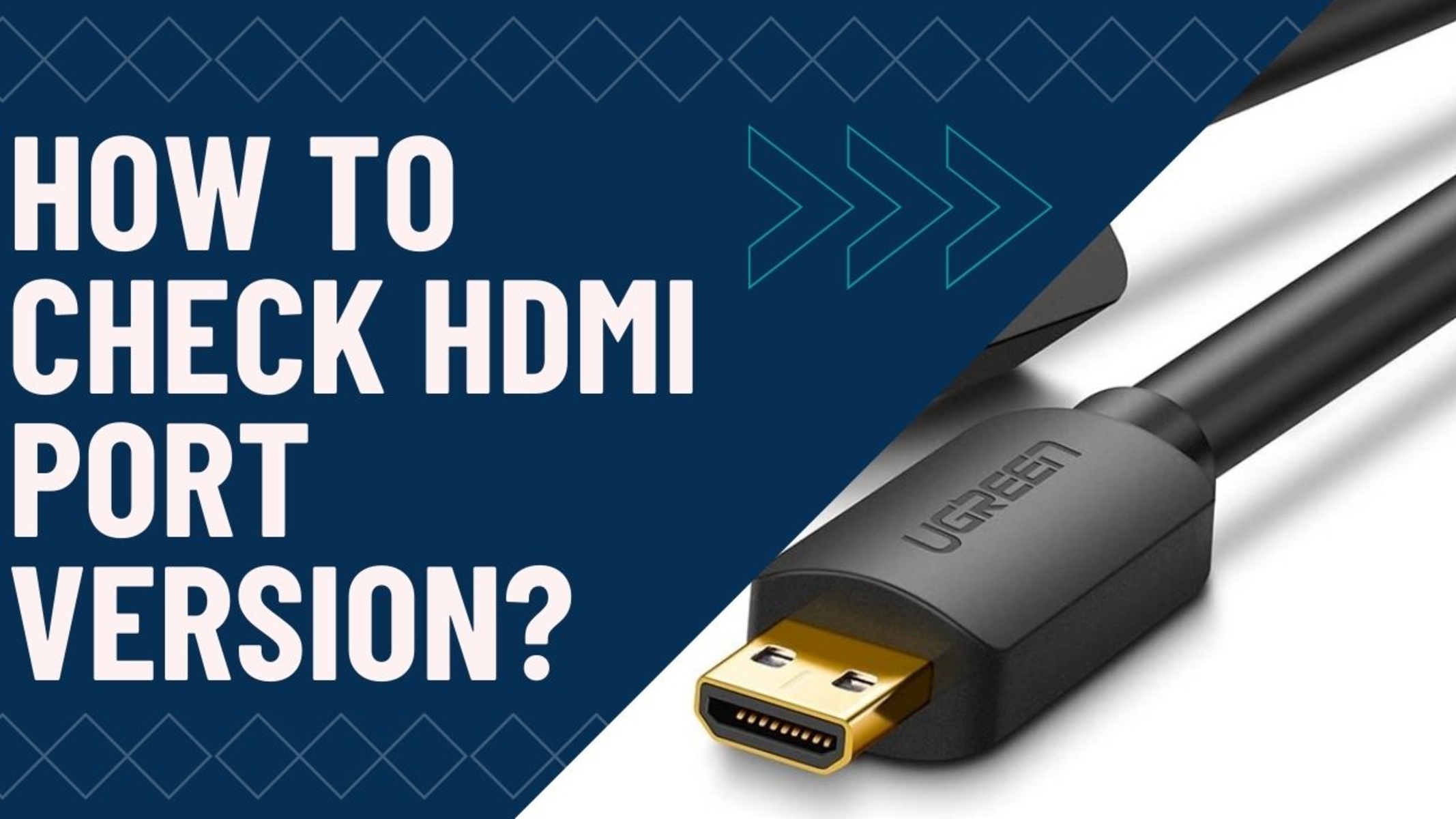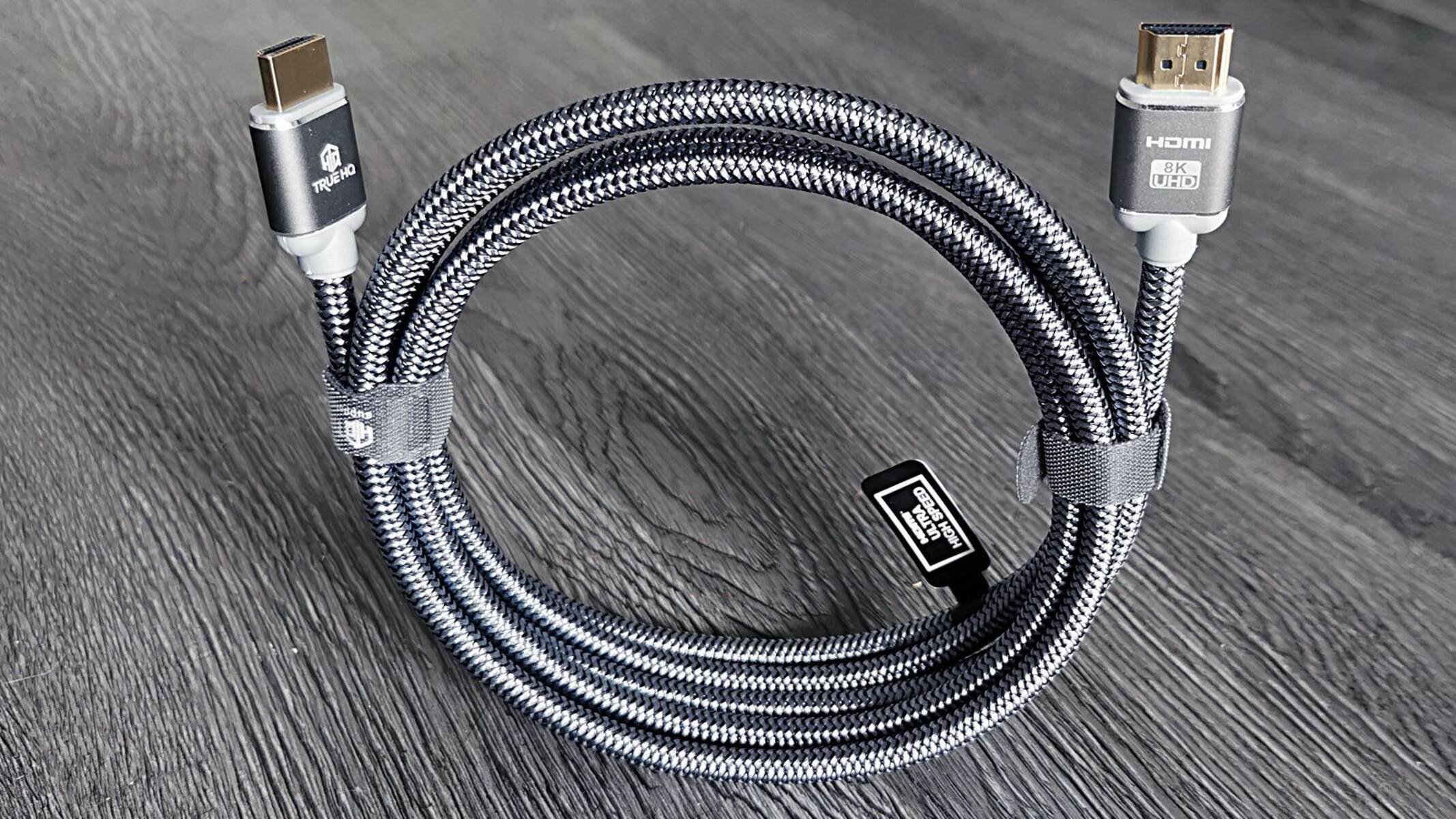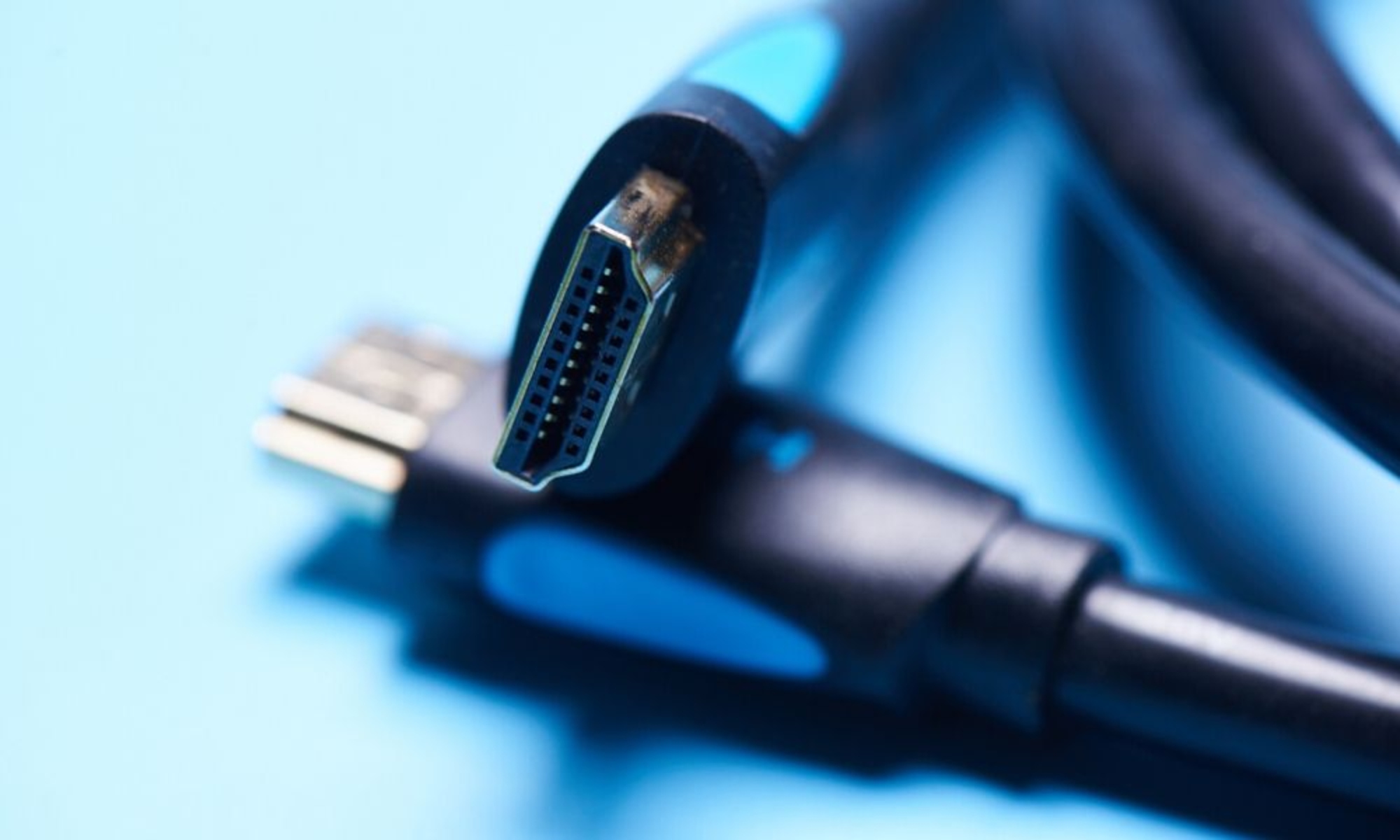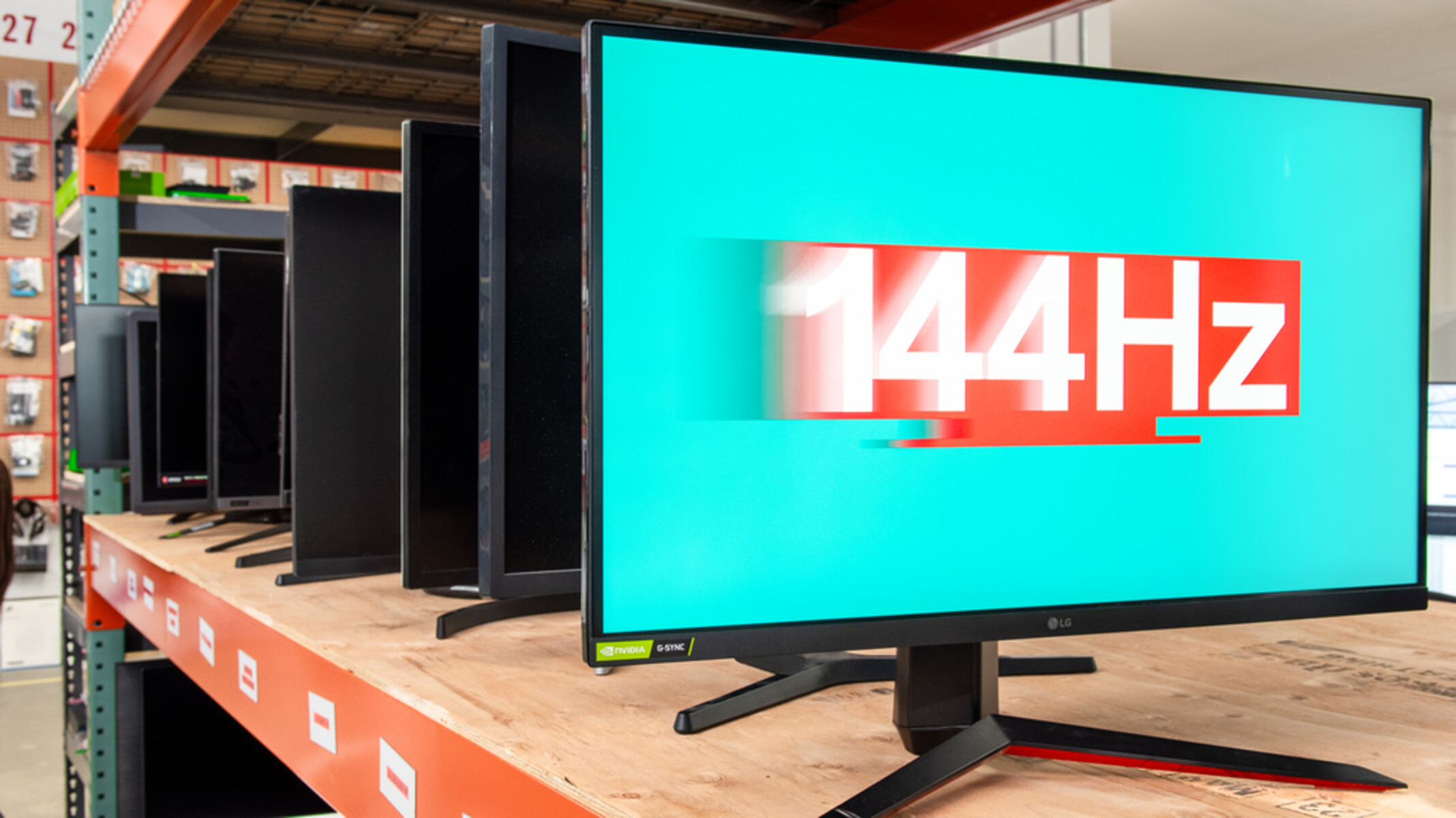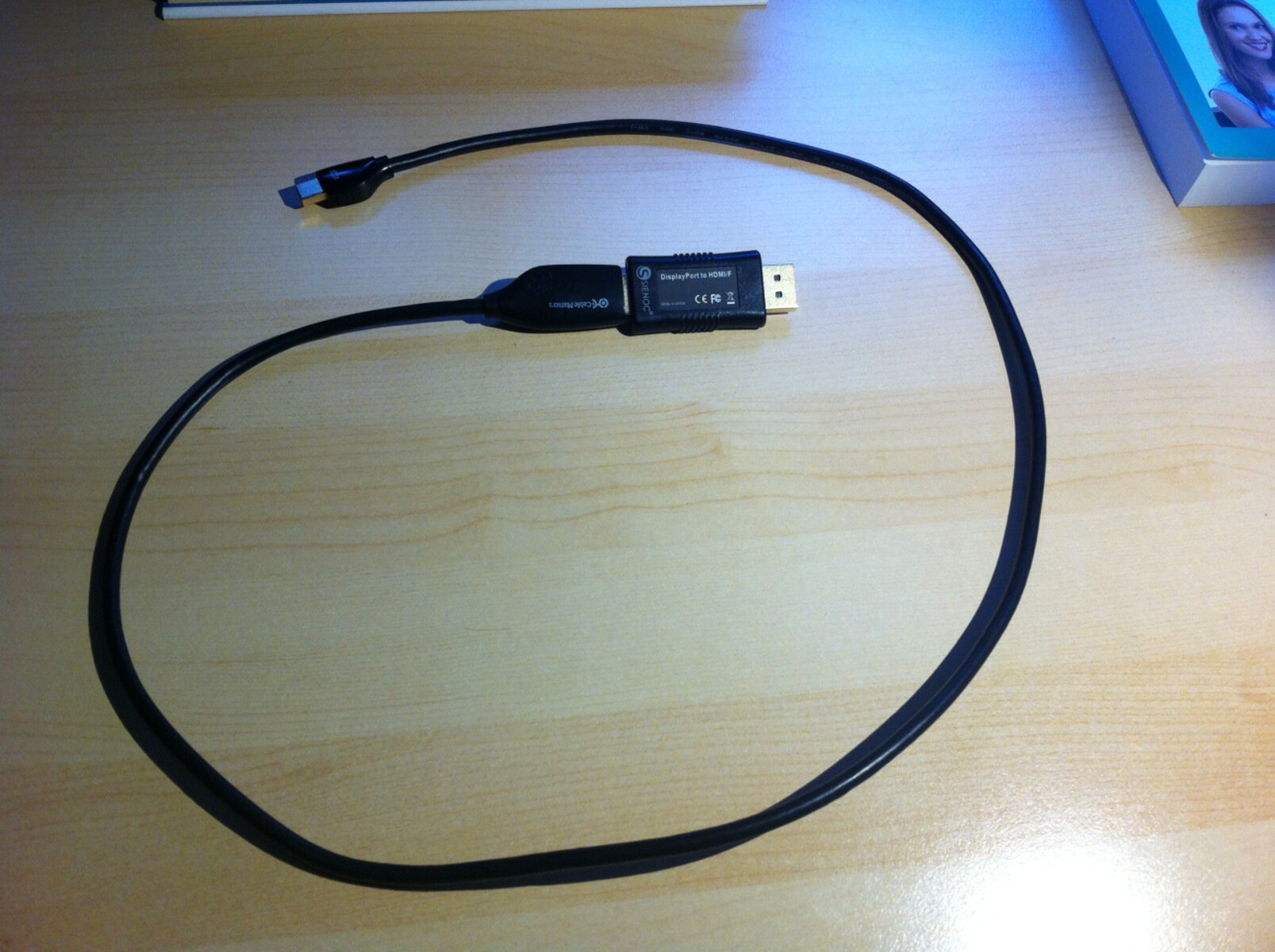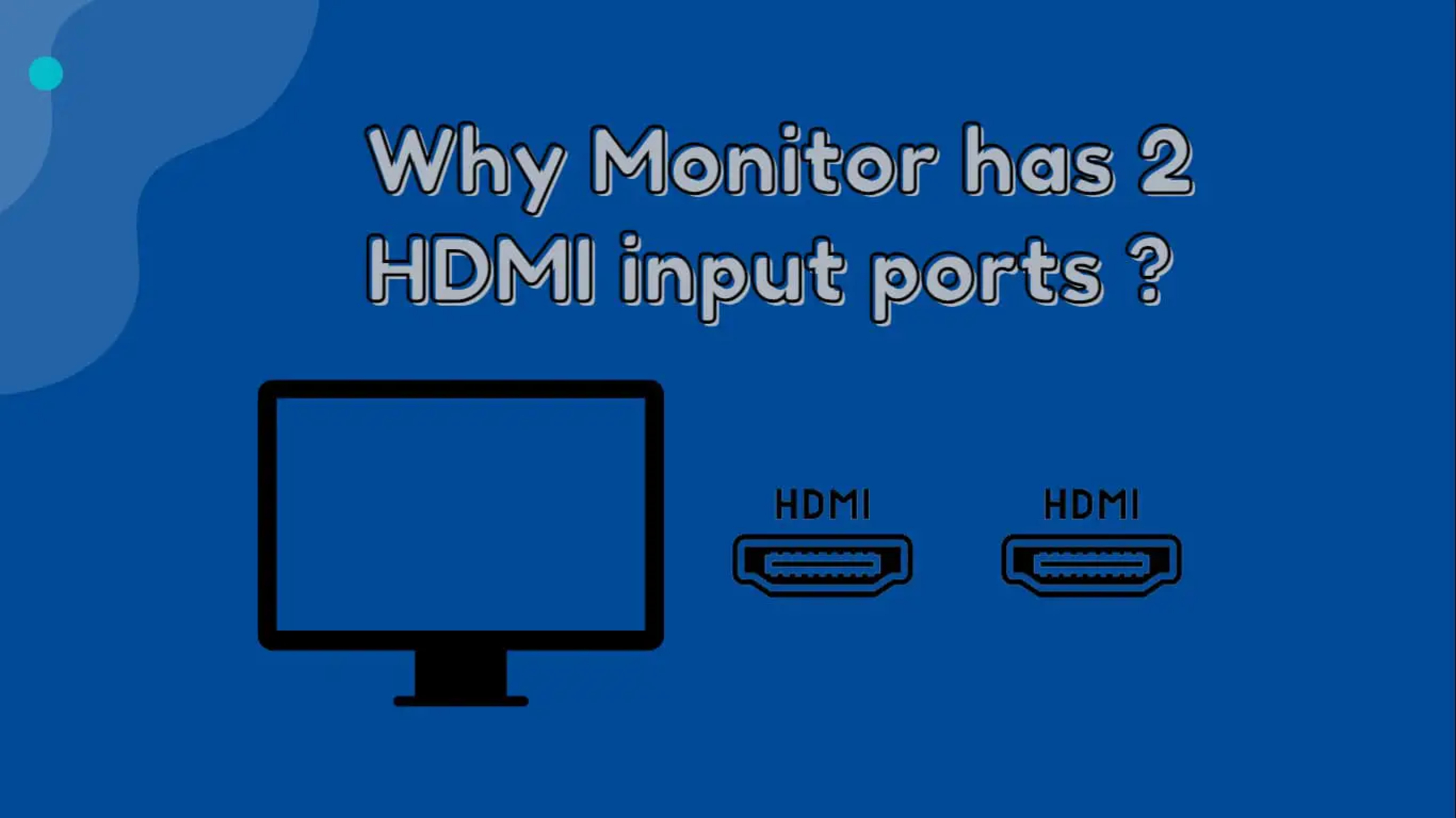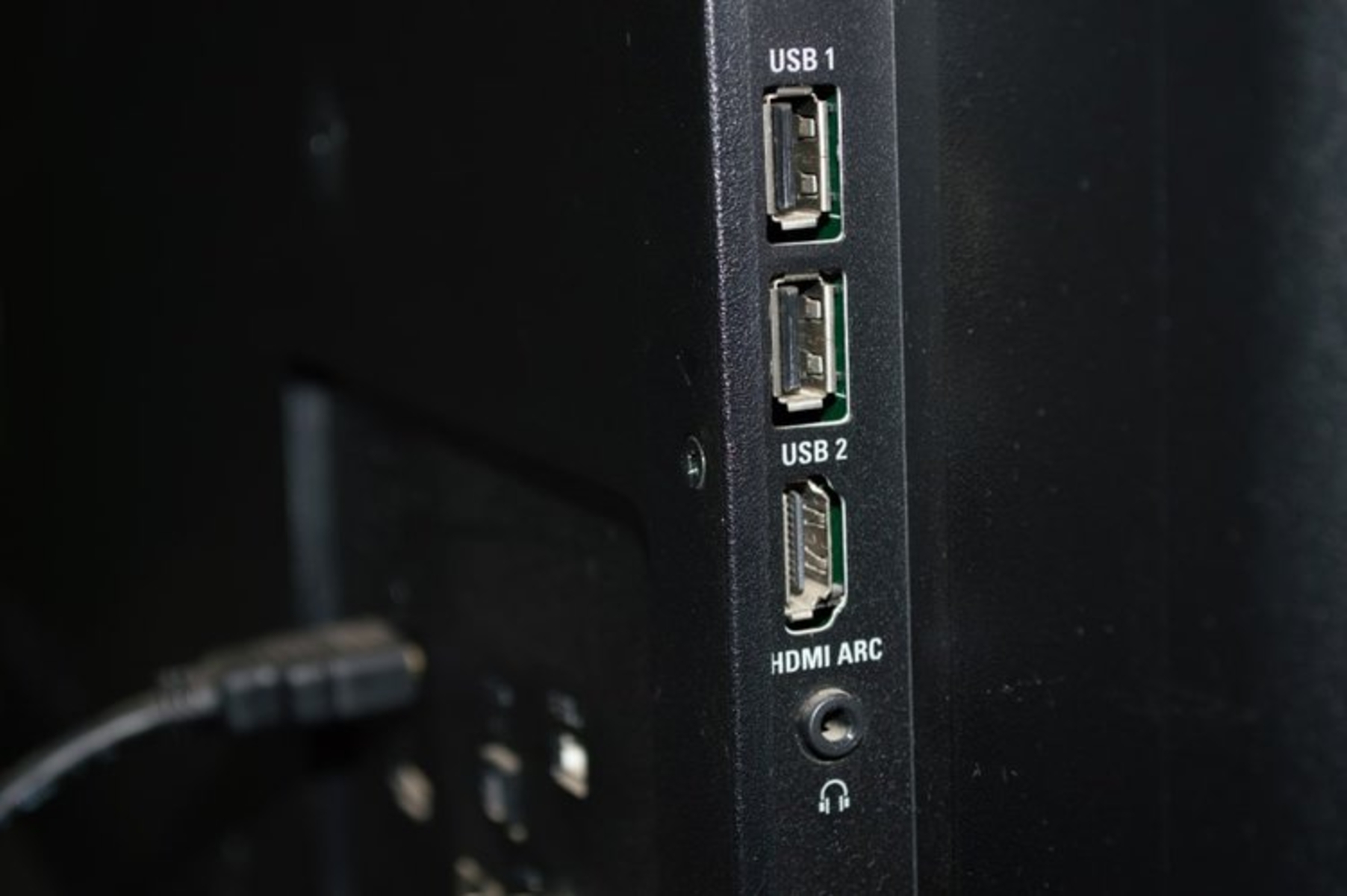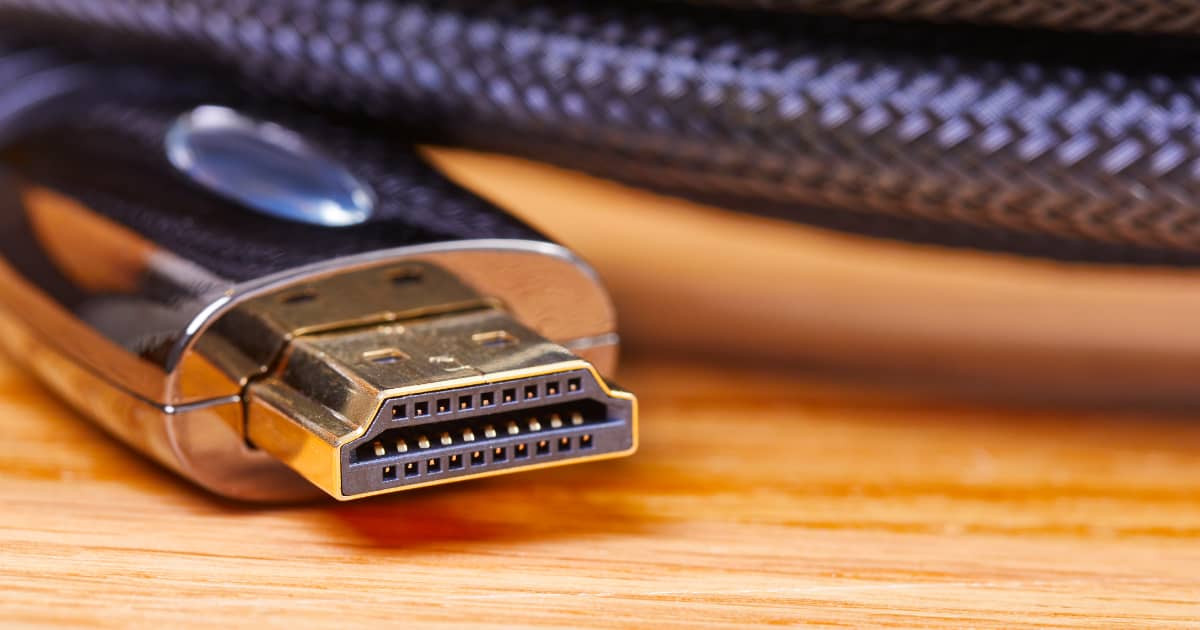Introduction
Welcome to our guide on how to check HDMI version! Whether you’re a tech enthusiast, a content creator, or simply someone looking to connect your devices seamlessly, understanding the HDMI version can be crucial. HDMI, short for High-Definition Multimedia Interface, has become the industry standard for transmitting high-quality audio and video signals between devices.
In this article, we’ll explore the importance of HDMI versions and provide you with easy methods to check the HDMI version of your devices. Whether you’re curious about the capabilities of your HDMI cable, the compatibility of your HDMI port, or the specifications of your devices, we’ve got you covered. By the end of this article, you’ll have the knowledge and tools to determine which HDMI version you’re working with.
HDMI versions are constantly evolving, with each new version bringing improvements in audio and video quality, bandwidth, and additional features. Being aware of the HDMI version enables you to make informed decisions when purchasing new devices, cables, or accessories to ensure compatibility and maximize performance.
Are you ready to dive into the world of HDMI versions and learn how to check which version your devices support? Let’s get started!
What is HDMI?
HDMI, or High-Definition Multimedia Interface, is a digital interface that allows for the transmission of high-quality audio and video signals between devices. It has gained popularity due to its ability to deliver crisp, clear, and uncompressed content, making it the go-to solution for connecting various multimedia devices such as TVs, monitors, DVD players, gaming consoles, and more.
HDMI was first introduced in 2003, replacing older analog connection methods such as RCA cables and VGA connectors. One of the main advantages of HDMI is its ability to transmit both audio and video signals using a single cable, eliminating the need for multiple wires and simplifying the setup process.
Over the years, HDMI has undergone several improvements and advancements, resulting in different versions. Each HDMI version brings enhanced features and capabilities, including increased bandwidth, support for higher resolutions and refresh rates, improved audio formats, and added functionalities like Ethernet connectivity and Audio Return Channel (ARC).
HDMI cables, which come in various lengths and configurations, play a crucial role in ensuring the proper transmission of signals between devices. These cables are typically labeled with the HDMI version they support, making it easier for users to identify their capabilities. It’s important to note that HDMI is backward compatible, meaning that you can use a newer HDMI version cable with an older version device, but the capabilities will be limited to the capabilities of the older device.
With the rise of 4K and HDR content, HDMI has become even more important. The latest HDMI versions are designed to handle the increased demands of these high-resolution formats, offering a seamless viewing experience with vibrant colors, sharp details, and immersive sound.
In the next section, we’ll delve into why knowing your HDMI version is essential, and how it can impact your overall multimedia experience.
Why is HDMI Version Important?
Understanding the HDMI version of your devices is crucial for several reasons. Let’s explore why HDMI version matters and how it can impact your multimedia experience.
1. Compatibility: HDMI versions determine the compatibility between devices. For example, if you have a high-resolution 4K TV but are using an older HDMI version cable, you may not be able to take full advantage of the TV’s capabilities. Knowing the HDMI version ensures that your devices are compatible and can deliver the expected quality and features.
2. Supported Resolutions and Refresh Rates: Each HDMI version has specific capabilities when it comes to supporting resolutions and refresh rates. Higher HDMI versions, such as HDMI 2.0 or 2.1, support 4K and even 8K resolutions, as well as higher refresh rates for smoother motion. By knowing your HDMI version, you can ensure that your devices are capable of displaying content at the desired resolution and refresh rate.
3. Audio Formats: HDMI versions also determine the audio formats supported. Newer HDMI versions, like HDMI 2.0 and above, can handle advanced audio formats such as Dolby Atmos and DTS:X, providing a more immersive and realistic audio experience. If you have a sound system that can take advantage of these formats, knowing your HDMI version is vital to ensure compatibility.
4. Additional Features: HDMI versions often introduce new features and functionalities. These include features like Ethernet connectivity, which allows for internet connectivity through HDMI cables, and ARC (Audio Return Channel), which enables audio transmission from the TV back to your audio system using the same HDMI cable. Being aware of your HDMI version ensures you can utilize these additional features if your devices support them.
By understanding your HDMI version, you can make informed decisions when purchasing new devices, cables, or accessories. It ensures that you’re investing in the right equipment to achieve optimal performance and compatibility. Whether you’re a gaming enthusiast, a movie lover, or a content creator, knowing your HDMI version is essential to unlocking the full potential of your multimedia setup.
Next, we’ll explore different methods on how to check the HDMI version of your devices, so you can easily identify which HDMI version you’re working with.
How to Check HDMI Version
Checking the HDMI version of your devices is a simple process that can be done using various methods. Whether you want to check the HDMI version of your cable, your device’s HDMI port, or its specifications, we’ve got you covered. Let’s explore the different methods below:
Method 1: Check the HDMI Cable
One of the easiest ways to determine the HDMI version is by examining the cable itself. Look for any labels or markings on the cable that indicate the version. Manufacturers often include the HDMI version information on the cable, making it easy to identify. If you can’t find any labels, you can try looking up the model number of the cable online to find out its specifications.
Method 2: Check the HDMI Port
Another method to check the HDMI version is by inspecting the HDMI port of your device. In some cases, the HDMI port may have the version number printed near it. This method is particularly useful when checking the version of TVs, monitors, or other display devices. However, not all devices have the HDMI version printed near the port, so you may need to rely on other methods.
Method 3: Check the Device Specifications
If you’re unable to determine the HDMI version through the cable or port, you can check the device’s specifications. Search for the model number of your device on the manufacturer’s website or refer to the user manual. The specifications should include details about the HDMI version supported by the device. This method ensures accurate information and works well for devices like cameras, gaming consoles, and media players.
Method 4: Use an HDMI Version Checker
If the above methods don’t provide the desired results, you can turn to online HDMI version checkers. These tools allow you to connect your device to a computer or smartphone via HDMI and run a diagnostic test to determine the HDMI version. Keep in mind that these checkers may not be 100% accurate, so it’s always a good idea to cross-verify the results with other methods.
By using the methods outlined above, you can easily check the HDMI version of your devices and cables. Knowing the HDMI version ensures compatibility and enables you to make informed decisions when upgrading or purchasing new equipment. Now that you have the know-how, go ahead and check the HDMI version of your devices for an enhanced multimedia experience.
Method 1: Check the HDMI Cable
One of the simplest and most straightforward methods to determine the HDMI version is by examining the HDMI cable itself. Manufacturers often label their cables with information about the HDMI version they support. Here’s how you can check the HDMI version using the cable:
1. Inspect the Cable: Take a close look at the HDMI cable, examining both the connectors and the cable itself. Look for any labels, markings, or imprints that indicate the HDMI version. Manufacturers typically include the version number on the cable, making it easy to identify.
2. Search for Model Number: If you don’t find any labels or markings on the cable, you can try searching for the model number online. Many cables have a model number printed on them. Enter the model number into a search engine, and you should be able to find information about the cable’s specifications, including the HDMI version it supports.
3. Refer to the Packaging: If you still can’t determine the HDMI version from the cable itself, check the packaging or box in which the cable came. Manufacturers often provide information about the HDMI version on the packaging or include a separate manual that specifies the cable’s capabilities.
It’s important to note that not all HDMI cables explicitly indicate their version. In some cases, the manufacturer might not label the cable, or you may have a generic cable that doesn’t provide detailed information. In such situations, it’s recommended to rely on other methods to determine the HDMI version of your devices.
Checking the HDMI cable version is particularly useful when you want to ensure compatibility with higher resolutions or advanced audio formats. If you find that your current cable doesn’t support the desired HDMI version, you may need to consider upgrading to a newer cable that can handle the required specifications.
By examining the HDMI cable for labels, searching for the model number, or referring to the packaging, you can typically determine the HDMI version with ease. Proceed to the next method if you couldn’t find the HDMI version information through this method.
Method 2: Check the HDMI Port
If you’re looking to determine the HDMI version of a device, another method is to inspect the HDMI port itself. While not all devices have the HDMI version printed near the port, it can still be a helpful way to identify the version. Here’s how you can check the HDMI version by examining the port:
1. Inspect the HDMI Port: Take a close look at the HDMI port on your device. Examine both the connector and the area surrounding it. In some cases, the HDMI version may be printed near the port, providing an immediate indication of the supported version.
2. Check the Device’s User Manual: If you don’t find the HDMI version printed on the port, consult the device’s user manual. The manual often contains detailed information about the device’s specifications, including the HDMI version it supports. Look for a section specifically dedicated to the HDMI port or connectivity options.
3. Visit the Manufacturer’s Website: If you can’t locate the necessary information in the user manual, visit the manufacturer’s website. Look for the support section or product page for your specific device. Manufacturers often provide detailed specifications on their websites, ensuring that users have access to accurate information about their products.
While checking the HDMI version through the port can be helpful, it’s important to note that not all devices have the version printed near the port. This method is often more applicable when examining TVs, monitors, or other display devices. For devices like gaming consoles, media players, or cameras, you may need to rely on other methods to determine the HDMI version.
By inspecting the HDMI port, consulting the user manual, or visiting the manufacturer’s website, you can usually find the HDMI version information for your device. If you’re still unable to determine the version through this method, proceed to the next method to explore alternative options.
Method 3: Check the Device Specifications
If you’re unable to determine the HDMI version through the cable or port, you can check the device’s specifications to find the HDMI version it supports. This method is particularly useful for devices like cameras, gaming consoles, media players, or any other device without clear labeling. Here’s how you can check the HDMI version through the device’s specifications:
1. Find the Model Number: Locate the model number of your device. This information can usually be found on the back of the device, in the user manual, or in the settings menu. Write down or make note of the model number as you’ll need it for the next step.
2. Visit the Manufacturer’s Website: Go to the website of the device’s manufacturer. Look for a support or product page related to your specific model. Once there, search for the product specifications or technical details section.
3. Search for HDMI Version: Within the specifications, look for information about the HDMI version supported by the device. It might be listed as “HDMI version,” “HDMI compatibility,” or a similar term. The manufacturer’s website should provide the most accurate and up-to-date information about the HDMI version.
4. Verify the HDMI Version: Double-check the information you found about the HDMI version with multiple sources. Cross-referencing with the device’s user manual, online forums, or other reliable sources can help ensure accuracy.
By checking the device’s specifications, you can usually find the HDMI version it supports. This method allows you to have precise information about the HDMI version and can be particularly useful for devices that do not have clear labeling near the port or cable.
If you still can’t determine the HDMI version through this method, don’t worry. There is one more method we’ll explore in the next section, which involves using an HDMI version checker to determine the HDMI version of your device.
Method 4: Use an HDMI Version Checker
If you’ve exhausted the previous methods and are still unable to determine the HDMI version of your device, using an HDMI version checker can help provide the necessary information. These tools allow you to connect your device to a computer or smartphone and run a diagnostic test to identify the HDMI version. Here’s how you can use an HDMI version checker to determine the HDMI version:
1. Connect the Device: Connect your device, such as a gaming console or media player, to a computer or smartphone using an HDMI cable. Ensure that the device is powered on and properly connected for the best results.
2. Download and Install the HDMI Version Checker: Search for an HDMI version checker application or software online. Look for well-reviewed and reliable options that suit your operating system. Download and install the HDMI version checker on your computer or smartphone.
3. Launch the HDMI Version Checker: Open the HDMI version checker software or application on your device. Follow the instructions provided within the software to detect the HDMI version of your connected device. The software will analyze the connected device and provide you with the HDMI version information.
4. Verify the HDMI Version: Once the HDMI version checker has provided the result, double-check the information with other methods if possible. Cross-referencing the obtained HDMI version with the device specifications or other reliable sources can help ensure accuracy.
While HDMI version checkers can be useful, it’s important to note that they may not always provide 100% accurate results. Factors such as software limitations or compatibility issues may affect the accuracy of the HDMI version reading. Therefore, it’s advisable to consider the results as an additional reference and verify the HDMI version through other methods if possible.
By using an HDMI version checker, you can determine the HDMI version of your device when other methods fail to provide the necessary information. Now that you’ve explored various methods to check the HDMI version, you should have a clear understanding of which HDMI version your device supports.
Conclusion
In this guide, we’ve explored the importance of knowing the HDMI version of your devices and provided you with various methods to check the HDMI version. By understanding the HDMI version, you can ensure compatibility, maximize performance, and make informed decisions when purchasing new devices or cables.
We started by explaining what HDMI is and how it has become the industry standard for transmitting high-quality audio and video signals between devices. HDMI versions continually evolve, bringing improved features and capabilities with each new release. These versions determine compatibility, supported resolutions and refresh rates, audio formats, and additional features.
We then delved into four methods to check the HDMI version. First, we discussed checking the HDMI cable itself for labels or model numbers. Next, we explored inspecting the HDMI port of the device for any indication of the HDMI version. We also highlighted the importance of referring to the device’s specifications, either through the user manual or the manufacturer’s website. Finally, we discussed the option of using an HDMI version checker, which involves connecting your device to a computer or smartphone.
It’s important to remember that HDMI cables and devices are backward compatible, meaning you can use a newer HDMI version cable with an older HDMI version device. However, the capabilities will be limited to the capabilities of the older device. Therefore, knowing the HDMI version is essential to ensure optimal performance and compatibility.
Whether you’re a tech enthusiast, a content creator, or simply someone looking to connect your devices seamlessly, understanding the HDMI version is crucial. Armed with the knowledge and methods outlined in this guide, you can easily check the HDMI version of your devices and make informed decisions to enhance your multimedia experience.
Now that you have the tools to identify the HDMI version, go ahead and check your devices. Ensure that your devices and cables are up to date, compatible, and capable of delivering the best audio and video quality. So, dive into the world of HDMI versions and unleash the full potential of your multimedia setup!







